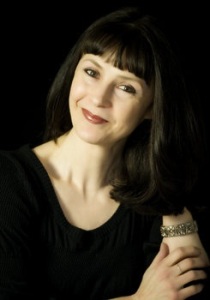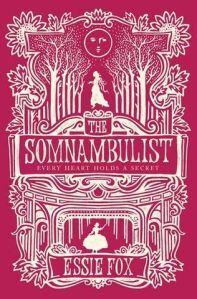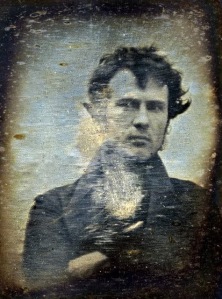Another day, another interview.
I’ve known (virtually) Essie Fox for a good old while now, and I can tell you she’s very lovely indeed (her blog’s cool too). What’s more, her debut novel, The Somnambulist (Orion) is out now and it sounds brilliant. So it’s a real pleasure to have her here today, to talk about it, and writing. Ladies and gentlemen, boys and girls, I give you Essie Fox…
Welcome to the blog, Essie. Thrilled to have you here. Now, I’ve yet to read ‘The Somnambulist’ (it’s only a matter of time!) – could you tell us a little about it please? Who’s it for and what’s it about?Hello Nik – thank you so much for having me!
The Somnambulist is a Victorian gothic mystery that follows the physical and emotional journey made by a young woman as she discovers the truth about her life. It’s a story about love, loss, guilt and deception which starts off in the Victorian music halls and then moves on to another ‘conventional Victorian setting’ – a sprawling gothic country house that may or may not be haunted.
Selfishly, I suppose it was written for me, in that I think any author really writes the book they would like to read. I’ve always loved Victorian literature, whether in the original versions or in some of today’s better historical novels.
I think that sales and marketing would probably say it’s a ‘big woman’s read’ but that’s probably because the main narrator is female. Several men have contacted me to say how much they’ve liked it, and there are many male characters who play a big part in the plot.
The title is wonderful. I think ‘somnambulist’ may be my new favourite word. For those who might not have come across it before, could you tell us what it means, and also, what it means in relation to the novel?
A somnambulist is a sleepwalker. In the novel the main character is sleepwalking her way through life, unaware of what’s real and what is deception. There are lots of twists and turns, but there is one major ‘revelation’ that I actually intend the reader to guess from the start (the clues are all there) so that they might engage with the narrator’s plight more forcefully – while she still has her eyes firmly closed to the ‘truth’.
The title comes from a painting by Millais which is featured in the plot. It shows a young woman sleepwalking along the edge of a cliff and was said to have been inspired by Wilkie Collins’ The Woman in White and also a popular Victorian opera – Bellini’s La Sonnambula – both of which deal with cases of sleepwalking. At a time of suppressed sexuality, and also one of enormous interest in the occult, sleepwalking was a very evocative symbol.
The novel is set in Victorian England and I’m well aware that that’s a period that interests you – could you tell us why?
It’s strange but I’ve always loved that era – so much so that I regularly blog about it. All those scientific, industrial and medical developments that still have an influence on our current lives.
And then, there were those old black and white ‘crinoline’ films that I watched as a child on wet Sunday afternoons – and also my early library visits, when I was strongly drawn to the traditional Victorian fairy tales, and books like The Water Babies, and Black Beauty.
As I grew older I really enjoyed studying the era at university – something very alluring about gothic, simmering, complex plots, and so often with women ‘in peril’ – placed in situations that you might find it hard to justify morally with any modern day heroine.
But what really draws me to that time, rather than earlier historical periods, is the use of photography which was developed then. We can actually ‘see’ people from that era, in all the truth of light and shade, rather than simply through works of art. I find that very exciting – to look at a face and wonder exactly what sort of life that man or woman lived.
This photograph of Robert Cornelius is thought to be one of the earliest self portraits. It was made in 1839 but I defy anyone to look at that photograph and not feel that you could ‘know’ that young man as well as any other who passes you by on the street today. In fact, I’ll confess that he might just have inspired one of my novel’s characters.
Now it’s done and written and published and being read and enjoyed, do you find yourself missing any of the characters, or that process of creating the story?
I loved every moment of writing The Somnambulist and yes, I do miss the characters – especially Phoebe and Nathaniel.
And, as far as the writing process goes, as I had no idea if that novel would ever be published, there was something very liberating about totally indulging myself in its world.
How did you write it? What was your routine? (And any tips you might like to give to others who hope to be published?)
My routine was, and is, simply to wake up and make some coffee, then to come back to bed where my laptop sits on a little breakfast table. It sounds very lazy and decadent, but sitting at a desk makes my back ache – and if I’m not ‘up and dressed’ then I’m not tempted to pop out and do other things. Thank goodness for the dog, and having to take her out for walks, or I might never leave my bed at all!
The only tip I can think of is something I touched on right at the start which is to write the book you want to read, something that really inspires you…and then write it as well as you possibly can. And read. Read the best in your genre. In fact, read as much as you can – the best of everything.
What’s the best piece of writing advice you’ve been given?
Don’t be too impatient. It takes as long as it takes…marry in haste, repent at leisure applies just as much to writing as it does to real life.
What’s next for you?
I have a two book deal with Orion, so I’m currently working on another Victorian mystery. It’s going to be called Elijah’s Mermaid, and the central theme is based on an artist obsessed with painting his muse as a mermaid. I think it’s going to be quite dark – and a big fairy tale influence too!

Essie Fox’s debut novel, The Somnambulist, is a Victorian gothic mystery which will be published by Orion Books in May 2011.
Before taking up writing, Essie worked as an illustrator – designing greetings cards, gift wrap, and decorative ceramics. Before that she worked in a Dickensian office in Bloomsbury’s Museum Street, employed as an editorial assistant by the publishers, George Allen & Unwin. So, in a way, it almost feels as if she has come full circle, returning to her very first love which is the world of books.
Essie is currently researching her second Victorian novel. She also writes the popular blog, The Virtual Victorian.
Born and raised in Herefordshire, Essie now divides her time between Bow in east London and Windsor. She is married with one daughter.


